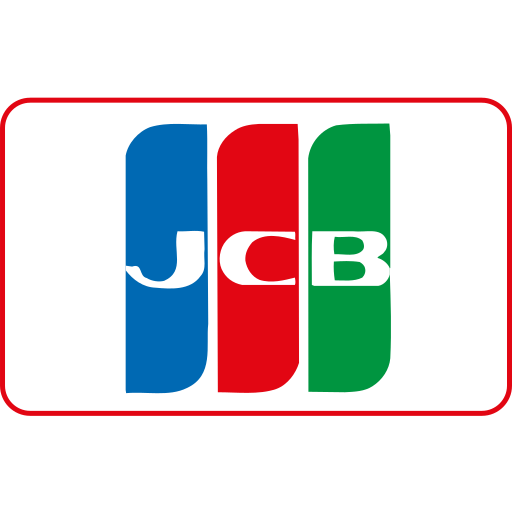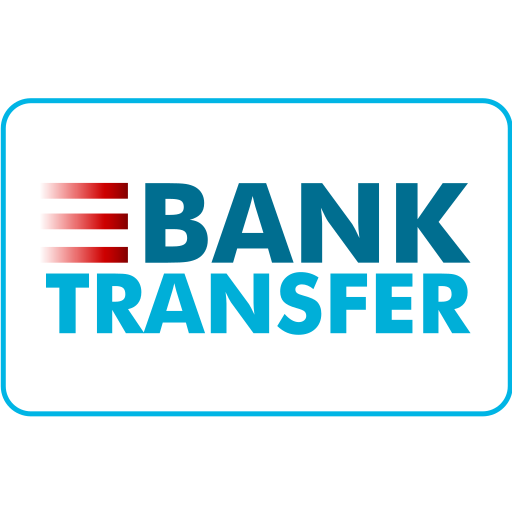
Imagine standing in front of a packed lecture hall at an Ivy League business school, tasked with imparting a foundational yet complex topic to a group of eager minds. The subject? RAID — a cornerstone technology that ensures data security, performance, and efficiency in today’s digital age. As a media buyer and IT aficionado who has seen both the triumphs and pitfalls of RAID implementations firsthand, I am here to guide you through what RAID is, its various levels, and how understanding it can protect your business’s data assets and maximize your investment.
Whether you’re a business owner in the Philippines looking to expand your online presence or an entrepreneur aiming to optimize your IT infrastructure, this article will demystify RAID through practical insights, real-life stories, and even pricing considerations expressed in Philippine peso (PHP). Buckle up for an informative journey that combines theory with application, helping you make informed decisions to safeguard your invaluable data.
What Is RAID? The Basics Explained
RAID stands for Redundant Array of Independent (or Inexpensive) Disks. First conceptualized in the late 1980s, RAID is a data storage virtualization technology that combines multiple physical disk drives into one logical unit. The goal? To improve performance, increase data redundancy, or both.
Think of RAID as a team of employees working together to handle your data. Each drive has a role, whether it’s duplicating information to guard against failure or splitting tasks for speed. By spreading data across multiple drives, RAID systems can continue working even if one or more disks fail — a crucial feature for businesses where downtime or data loss can be catastrophic.
The brilliance of RAID lies in its levels or configurations — RAID 0 through RAID 10 (and beyond) — each offering different balances of performance, fault tolerance, and cost. Understanding these will allow you to tailor your storage setup to your business needs.
Why RAID Matters for Business Owners in the Philippines
In the Philippines, where digital transformation is accelerating rapidly across industries—from retail and finance to education—having robust data storage solutions is no longer optional but essential. Internet penetration is increasing year-on-year, e-commerce is booming, and cloud services are gaining traction.
However, many smaller businesses still rely on physical servers or local storage for sensitive customer data and operational information. Implementing the right RAID configuration can mean the difference between swift recovery from hardware failure and costly data loss or downtime. Furthermore, considering local pricing and availability of hardware components in PHP ensures that your investment is both effective and economical.
Diving Deeper: The Most Common RAID Levels
Let me take you through the most popular RAID configurations—RAID 1, 5, 6, and 10—with detailed explanations, real-life applications, and lessons learned from my own experiences managing media campaigns and IT assets across different environments.
RAID 1: Mirroring for Safety
RAID 1 functions by duplicating data identically on two drives. It’s like having a trusted partner who copies every piece of information you handle immediately—if one fails, the other steps in without missing a beat.
Benefits:
- High Fault Tolerance: If one disk fails, your data remains intact on its mirror.
- Easy Recovery: Swapping out a failed drive is straightforward.
- Simplicity: RAID 1 is often used in small offices where reliability trumps complex setups.
Limitations:
- Cost: Requires double the storage capacity since data is duplicated.
- No Performance Boost: Write speeds remain similar to single disk performance.
Personal story: I recall working with a small Philippine-based startup that relied solely on single-drive storage. After a disk failure during their peak sales period, they lost valuable campaign data and were unable to fully recover. Transitioning them to RAID 1 was a game-changer—it cost them roughly PHP 15,000 more initially but saved them thousands in lost opportunities later.
RAID 5: Performance and Redundancy with Parity
RAID 5 uses block-level striping with distributed parity. Imagine splitting your data across three or more disks; parity information enables data reconstruction if one disk fails.
Benefits:
- Fault Tolerance: Can sustain a single drive failure without data loss.
- Improved Read Performance: Data is read from multiple disks simultaneously.
- Storage Efficiency: Only one disk’s worth of space is used for parity.
Limitations:
- Write Penalty: Parity calculations reduce write speed.
- Rebuild Time: Recovering after failure can stress remaining disks.
A cautionary tale: During a campaign launch for a client in Manila, we implemented RAID 5 on their server. When a disk failed during their busiest week, the system stayed online—but the rebuild process slowed performance significantly. We later upgraded to RAID 6 for added fault tolerance.
RAID 6: Double Parity for Enhanced Safety
An evolution of RAID 5, RAID 6 adds a second layer of parity, allowing for the failure of two drives simultaneously—ideal for critical systems where uptime is paramount.
Benefits:
- Tolerance for Two Drive Failures: Provides superior protection.
- Read Performance: Similar to RAID 5 but more secure.
Limitations:
- Higher Write Penalty: Two parity blocks slow writes further.
- Cost: Requires more disks (minimum four).
A lesson learned: I once advised a large Philippine-based financial firm to upgrade from RAID 5 to RAID 6 after experiencing simultaneous drive failures during high traffic periods. Their investment—approximately PHP 80,000 more in hardware—was justified by uninterrupted service during critical reporting times.
RAID 10: Combining Mirroring and Striping for Speed and Security
RAID 10 (or RAID 1+0) merges the strengths of RAID 0 (striping) and RAID 1 (mirroring). Data is striped across mirrored pairs—a perfect blend of speed and fault tolerance.
Benefits:
- Excellent Performance: High read/write speeds due to striping.
- Fault Tolerance: Can survive multiple drive failures if they aren’t in the same mirrored pair.
Limitations:
- Costly: Requires at least four drives with half of total capacity used for mirroring.
A success story: Working with a prominent e-commerce platform in Cebu, we implemented RAID 10 to handle their high transaction volumes with zero downtime even during peak sale events like “11.11.” Their setup cost around PHP 120,000 initially but dramatically improved customer experience and revenue consistency.
A Comparative Table of Key RAID Levels
| RAID Level | Description | Minimum Drives | Tolerated Drive Failures | Performance Impact | Storage Efficiency |
|---|---|---|---|---|---|
| RAID 1 | Mirroring; duplicates data | 2 | 1 | No write improvement; read may improve | 50% |
| RAID 5 | Striping with single distributed parity | 3 | 1 | Better read; write slower due to parity | (n-1)/n |
| RAID 6 | Striping with double distributed parity | 4 | 2 | Slightly slower write than RAID 5 due to double parity | (n-2)/n |
| RAID 10 | Striped mirrors | 4 | >=1 depending on failure location | Sustained high read/write performance | 50% |
The Cost Factor: Investing in RAID for Your Business
A common question I get is: “How much does it cost to implement RAID?” Pricing varies depending on the number and types of drives, controllers, and your specific RAID level choice. For Philippine businesses, here’s a simplified breakdown expressed in PHP to give you an idea:
- SATA HDD (1 TB) – approx. PHP 2,500 per drive
- SATA SSD (500 GB) – approx. PHP 5,000 per drive
- RAID Controller Cards – from PHP 10,000 up to PHP 50,000+
If you choose RAID 10 with four HDDs, your initial disk investment could be around PHP 10,000 just for drives (not including controllers). Compare this with the cost of potential downtime or data loss—often far greater—and the ROI becomes clear.
Mistakes and Lessons from My Journey with RAID
I’ve encountered numerous scenarios where lack of proper RAID implementation caused headaches. For example, early in my career managing digital campaigns for a Philippine hospitality client, we underestimated the rebuild stress on their RAID 5 array after a disk failure. The rebuild caused slowdowns that affected real-time booking operations—a costly reminder that RAID isn’t just set-and-forget.
This experience taught me the importance of not only choosing the right RAID level but also monitoring disk health proactively and having backup strategies beyond RAID itself. Investing in RAID is only one piece of the puzzle—combine it with solid backup protocols and disaster recovery plans for optimal protection.
The Future of Data Storage: Beyond Traditional RAID?
The landscape is evolving with advancements such as software-defined storage, cloud redundancy, and NVMe drives. Yet, understanding traditional RAID remains crucial for business owners who manage on-premise systems or hybrid environments.
The Philippines’ growing IT infrastructure demands that businesses remain vigilant about data security and performance. Armed with knowledge from this guide, you can navigate these technological choices confidently and adapt as innovations arise.
The Final Word: Choosing the Right RAID Setup for Your Business
Selecting the appropriate RAID configuration depends on your business priorities—speed, redundancy, budget, and scalability all play roles. Here’s a quick decision guide:
- If simplicity and basic redundancy matter: choose RAID 1.
- If you need efficient fault tolerance with good read speeds: consider RAID 5.
- If you want maximum fault tolerance and can afford slower writes: opt for RAID 6.
- If performance combined with redundancy is critical: go for RAID 10.
Your data is one of your business's most valuable assets—just as crucial as your marketing strategies or customer relationships. Implementing the right RAID solution ensures that this asset remains safe and accessible at all times. Remember my stories from the Philippines; they demonstrate that investing wisely in technology pays dividends beyond initial costs.
I hope this lecture-style guide has illuminated RAID's complexity while grounding it in practical realities. Whether you’re launching an e-commerce platform in Manila or managing the IT backbone of a growing SME in Davao, use these insights to make technology work for you—not against you.
If you have questions or want advice tailored to your specific situation, feel free to connect with IT professionals who specialize in storage systems. The world of RAID might seem daunting at first glance—but mastering it can be a cornerstone of your digital success.
This concludes our deep dive into “What Is RAID?” and its key levels like RAID 1, 5, 6, and 10. Here’s to protecting your business data wisely!
We are the best marketing agency in the Philippines.
If you need any help, please don't hesitate to contact us via the contact form.















Ang PH Ranking ay nag-aalok ng pinakamataas na kalidad ng mga serbisyo sa website traffic sa Pilipinas. Nagbibigay kami ng iba’t ibang uri ng serbisyo sa trapiko para sa aming mga kliyente, kabilang ang website traffic, desktop traffic, mobile traffic, Google traffic, search traffic, eCommerce traffic, YouTube traffic, at TikTok traffic. Ang aming website ay may 100% kasiyahan ng customer, kaya maaari kang bumili ng malaking dami ng SEO traffic online nang may kumpiyansa. Sa halagang 720 PHP bawat buwan, maaari mong agad pataasin ang trapiko sa website, pagandahin ang SEO performance, at pataasin ang iyong mga benta!
Nahihirapan bang pumili ng traffic package? Makipag-ugnayan sa amin, at tutulungan ka ng aming staff.
Libreng Konsultasyon